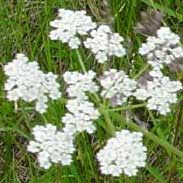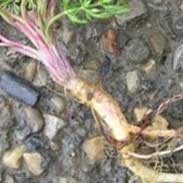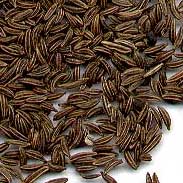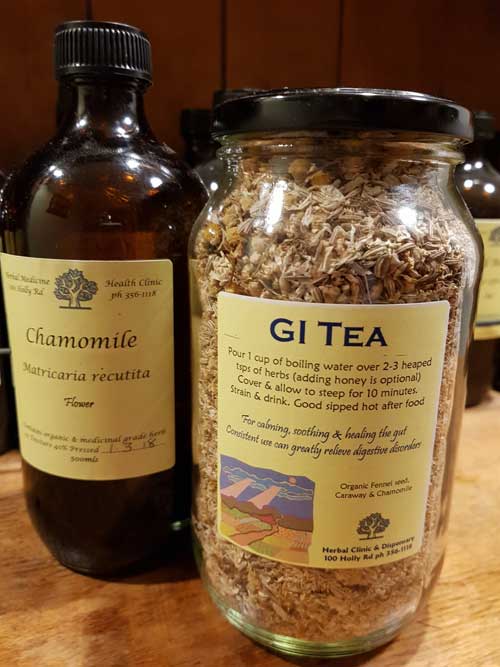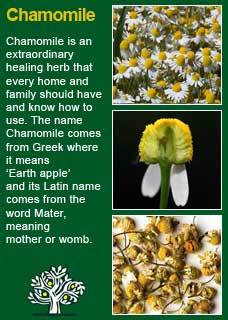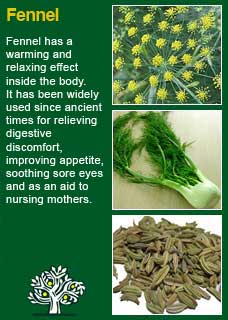
|
|
||||||||||
| Our Pages ABOUT CONSTITUTIONAL MEDICINE
|
The richly aromatic, long and curved seeds of Caraway, a plant that grows half a meter over a two-year life span and has feathery fronds similar in appearance to the carrot plant (it belongs to the same family).
Caraway seeds have been found in prehistoric food remains from 3500 B.C. The ancient Egyptians especially loved this herb and it was warmly recommended for digestive upsets in the world's oldest surviving medical text, the Ebers Papyrus. The ancient Greek physician Dioscorides mentions the use of Caraway to aid digestion and herbals throughout the ages have recommended them for indigestion, gas and infant colic. Culpeper writing 'Caraway helpeth digestion and easeth away the pains of the wind colic' and the eclectic physicians of the 19th century praised Caraway's ability to 'excite the digestive powers'. Two essential oils in Caraway, (carvone and limonene) give the herb its distinctive taste and smell and these oils are also what cause it to reduce spasm and cramp in the digestive system. Caraway is a much- loved family herb in many traditional cultures, it is believed to improve the production and flow of breast milk and has been a particularly key remedy in the treatment for the miseries of infant colic. The great German herbalist & physician, Rudolph Weiss talks about Caraway it in relation to two other great carminative (gut-spasm reducing) herbs from the same Umbelliferae family, Aniseed and Fennel. 'The relative carminative strength of the plants, in decreasing order of potency, can be described as Caraway > Fennel > Aniseed. The expectorant (lung cleansing) potency of the herbs decreases in the reverse order. Hence Caraway has the strongest carminative potency and the lowest expectorant potency; the inverse is true of Aniseed and the potencies of Fennel lie in between the two.'
The entirety of my own practice in using Caraway has been in the form of a combination of herbs that we call GI tea, recipe & instructions below, and here I have found it to be a greatly reliable ally when I am using it to help the many people who have too much tension in their digestive tracts. Anyone reading this who is studying herbal medicine or simply wants to get to know these great plant allies better will do well to take some tea (or I am sure the same effect could be felt from the tincture) of Caraway with a quiet and attentive mind and then simply listen and feel to how your body responds to it I think that you will soon sense that the way Caraway feels inside the gut is warming, calming and relaxing. It is a herb that works perfectly in combination with Fennel seeds and Chamomile for indigestion, cramping and tension in the belly.
Ingredients
The above amounts make 150gms of herb, enough for at least several weeks of daily use. The proportions are given so that a person can make more or less according to their needs or from what is available.
The dosage to have a pronounced effect is to pour one large cup of freshly boiled water over 2-3 hpd tsps, or about 4 grams of the herbs. Cover and allow to steep for a good 10 minutes, then strain and drink. Adding some honey may be welcome and it is best if sipped whilst hot. The taste of this tea is very acceptable and there has been excellent feedback over the years of using it from people who say how much they enjoy it and how much they feel it benefits their digestion and general well-being. It can be safely taken by anyone from any age as often as they need or want it.
Add fresh young caraway leaves to soups, stews, and salads. Try cooking the older leaves like spinach, but be prepared for a stronger, spicier flavour, like that of the seeds. Cook the roots and serve them as you would carrots or parsnips. Caraway seeds are widely used to flavour and season rye breads, cakes, biscuits, cheeses, omelettes, pasta, soups, salad dressing, applesauce, rice, and seafood. Vegetable dishes using beets, carrots, potatoes, green beans, cauliflower, cucumber, onions, zucchini, and turnips often call for the addition of caraway seeds. Coleslaw and sauerkraut, and indeed all cabbage dishes, are incomplete without caraway seeds. (If you don't like the smell of cooking cabbage, put a 5 ml (1 teaspoon) of caraway seeds in a muslin bag and boil it with the cabbage) Much of the information here about the traditional uses of Caraway is consistent with the model of thinking whereby one may treat problem A with plant B. There is value in this approach, especially in how it helps us pass on useful knowledge to one another, but it falls short in one vital area; and that is that people are not all cut from the same cloth! Something that works brilliantly for one person may do less for another -- why is this? Part of the reason is that people vary in their constitutions as to whether they are either hotter or cooler and, at the same time, either dryer or damper. This useful and rather fascinating subject is introduced further here Another big part of using the right herb when it is most needed comes from understanding the need to treat what is going wrong for the person that had led up to their getting a health condition. In this light, Caraway can particularly offer its benefits when a relaxing action is needed in the 'cycle of healing', more about this here
Please understand that I cannot advise you, including on products or dosage, without seeing you in person in my clinic but for ideas
on how you might find a good herbalist in your area read here |
|
|
© 2011 R.J.Whelan Ltd

